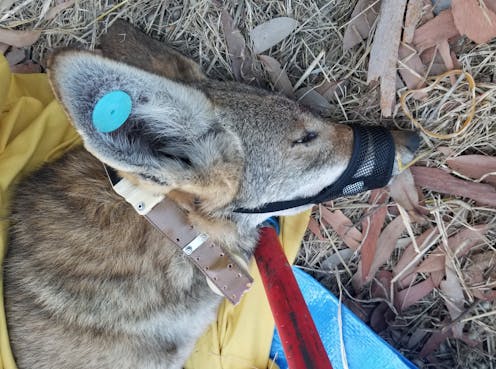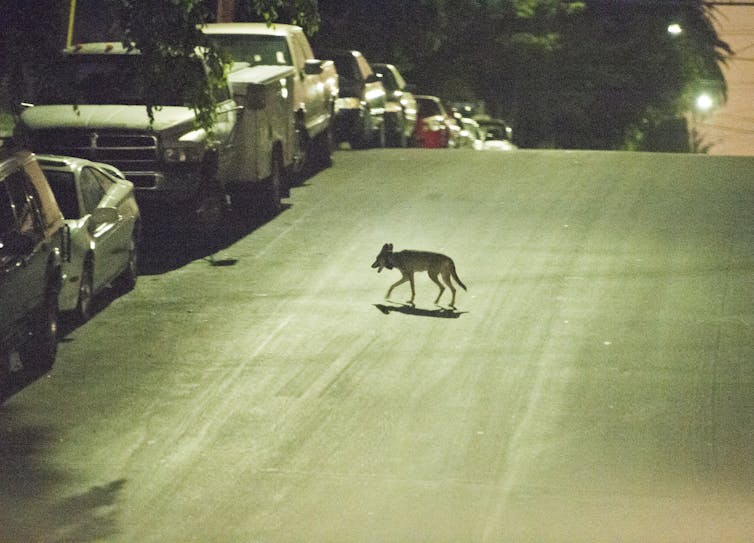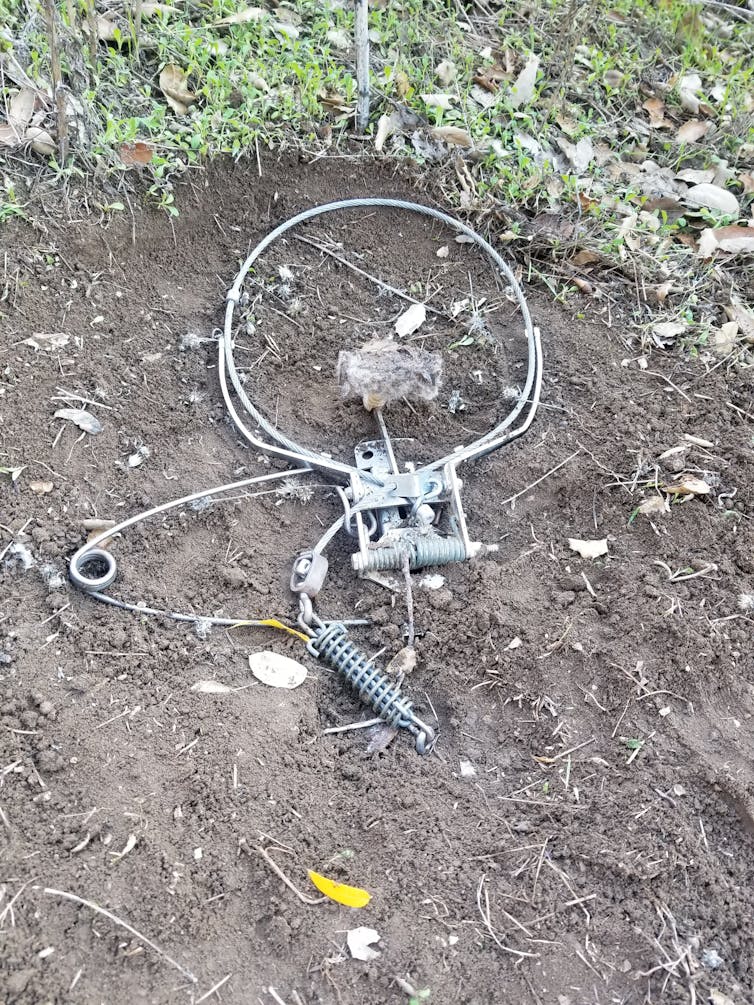Scientist at work: Trapping urban coyotes to see if they can be 'hazed' away from human neighborhood
Biologists capture and collar coyotes in urban Los Angeles in order to study the effectiveness of 'hazing' as a wildlife management tool.

After weeks of sleepless nights spent scrutinizing grainy images relayed from our remote cameras, mostly of waving grass and tumbling leaves, finally, there it is. A live coyote with a loop around it’s neck. On October 8, 2019, my colleagues and I caught the first member of the University of California Agriculture and Natural Resources pack, #19CU001.
We captured, collared and released this coyote to help answer an important question; is community hazing an appropriate management method for urban coyotes in Los Angeles County? Hazing is pretty much what it sounds like – shouting, arm waving and noise-making directed at urban coyotes in hopes of getting them to significantly change their behavior and avoid urban-residential areas.

Coyotes attack and often eat domestic animals, especially cats. In a 2019 study, cats were found in 19.8% of coyote scat. Coyotes also occasionally bite humans, especially in Southern California. In the first few months of 2020, five people have been bitten in Los Angeles and Orange counties alone. Hazing is being touted as the answer to coyote management across many urban areas in the United States.
But there is little scientific evidence to support hazing as an effective management tool. In fact, so far, the method has failed to work in other wildlife situations including those with bears and birds. Wildlife managers are eager for science-based solutions, which is why, as biologists, my colleagues and I decided to study hazing.
First, catch 20 coyotes
We designed an experiment that calls for the capture, GPS collaring and release of 20 coyotes east of the 110 Freeway in Los Angeles. Initially, we will measure how the coyotes use open space and the urban environment. Then, we plan to haze 10 of them and remeasure how they use space.
The other 10 will serve as a control group. After 18 months, the un-hazed coyotes will switch to a hazing treatment and the 10 already-hazed coyotes will have their collars dropped remotely and we will set about capturing another 10 to replace them.
I work with the LA County’s Department of Agriculture to identify trapping sites, which is one of the trickiest parts of catching coyotes. We first look for areas that have had recent or historic coyotes sightings, examining the subtle signs left on the ground, like paw prints and scat. We also are careful to make sure no people or dogs are nearby.

Once we have confirmed the presence of coyotes, two skilled trappers from the county set a Colloraum trap – which is a humane canine capture device. It requires the animal to bite down on a lever to engage a cable that traps the animal by the neck. You can’t legally bait traps in California, so the lever looks like a fluffy mammal. We have it set to a hair trigger. Game cameras surround the trap and send images to an app on my phone that lets me monitor what is happening at night, when coyotes are most active.
Catching ‘Lazy Legs’
The night I see we’ve finally caught our first coyote, it’s all go! I call my team, greeted by sleepy hellos from my county partners, our wonderful veterinarian and my staff. We have to rally quickly because it is important to get the animal out of the trap and processed in as short a time as possible.
When I arrive at the site, I can already see the coyote’s yellow eyes reflecting light from my car’s headlights. The excitement is hard to express. It certainly makes up for the hours and hours of watching leaves and grass sway in the breeze.
Our veterinarian from Western University of Health Sciences, prepares the animal for sedation. We restrain and muzzle the coyote, just in case he wakes up. We prepare the collar and weigh him. He’s a good size, 29 lbs. (13 kg). We check his teeth to try to estimate his age. He’s definitely not a juvenile, but is probably less than 3 years old. I secure the collar in place around his neck.
Then it’s time to administer the sedative reversal. We “reverse” him in a crate to ensure we don’t release a drugged coyote that could wander in front of a car.
When we swing the door open, he bolts and is out of sight in a flash. Just like that, 19CU001 is out on the wind collecting data for our project. Based on the data coming from his collar, this individual appears to have a home range of less than half a square mile, which is why we nicknamed him “Lazy Legs.” Hopefully, he will be easy to find and haze, when the time comes.
Currently, we have caught five out of the 20 coyotes we need for our study, but the current cornonavirus health restrictions have suspended our work for the time being.

So far, the data we’ve collected shows individual animals have home ranges that vary widely in size, from less than half a square mile up to seven square miles. We also have observed they spend considerable amounts of time in the urban environment, probably looking for food.
The data will help us pinpoint exactly where, when and in what types of habitat coyotes live in Eastern Los Angeles and will also give us a baseline for when we begin to test hazing.
[Deep knowledge, daily. Sign up for The Conversation’s newsletter.]
Niamh M. Quinn receives funding from Los Angeles County's Productivity Investment Fund.
Read These Next
What’s at stake in Trump’s executive order aiming to curb state-level AI regulation
In the absence of comprehensive federal AI regulation, states have stepped in. The Trump administration,…
The Bible says little about Jesus’ childhood – but that didn’t stop medieval Christians from enjoyin
Legends about Jesus’ early years that circulated in medieval Europe often drew on apocryphal texts.
Can scientists detect life without knowing what it looks like? Research using machine learning offer
A new machine learning model explores the boundary between biological and nonbiological chemistry.





